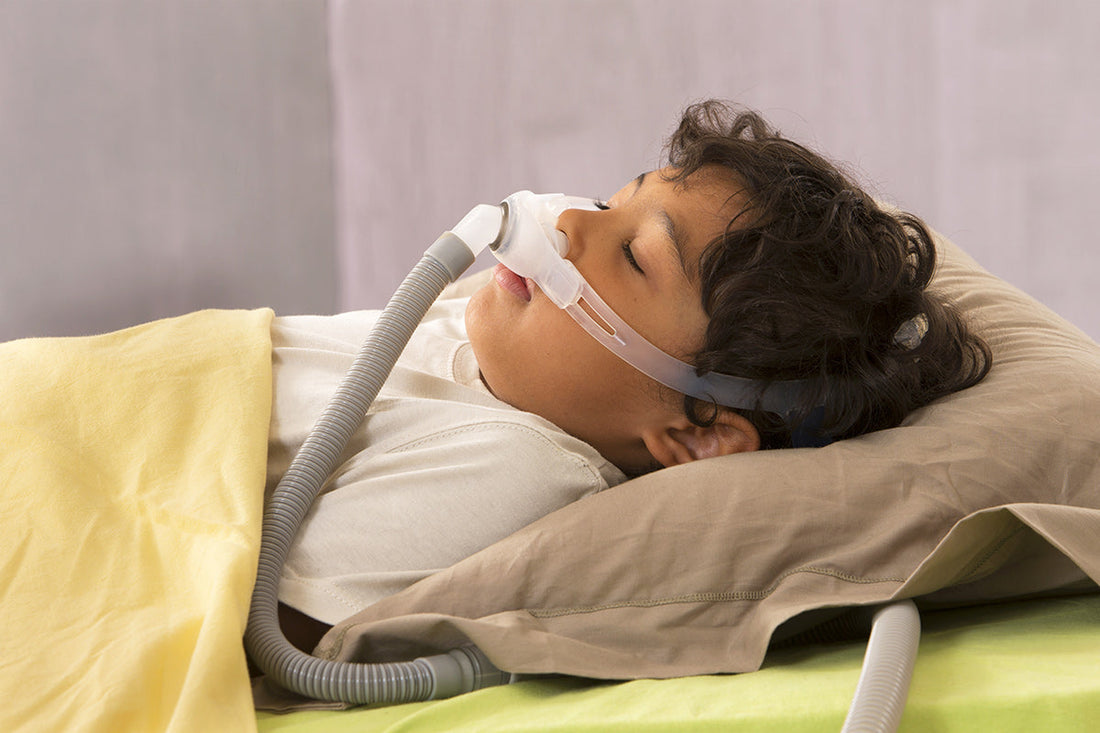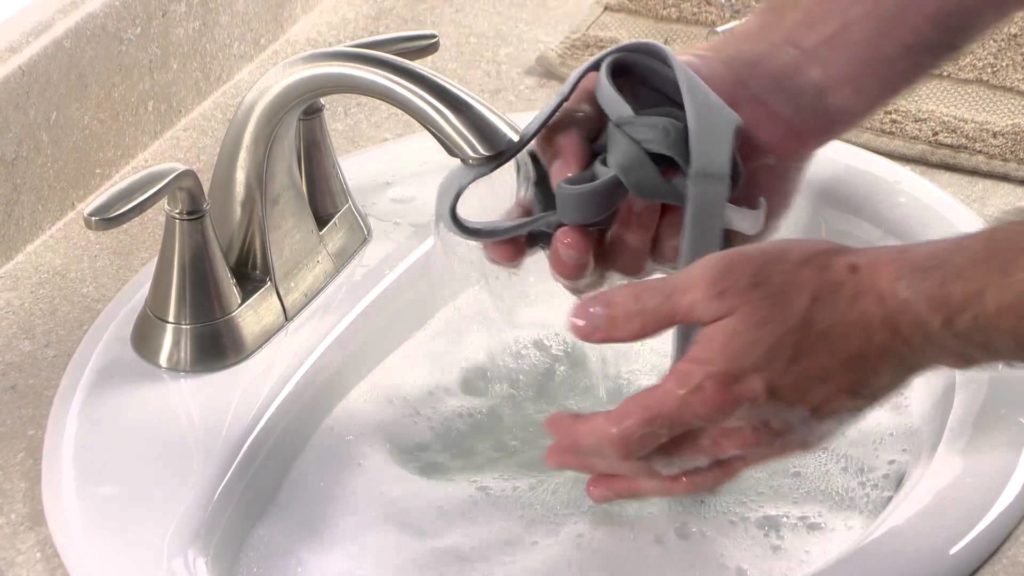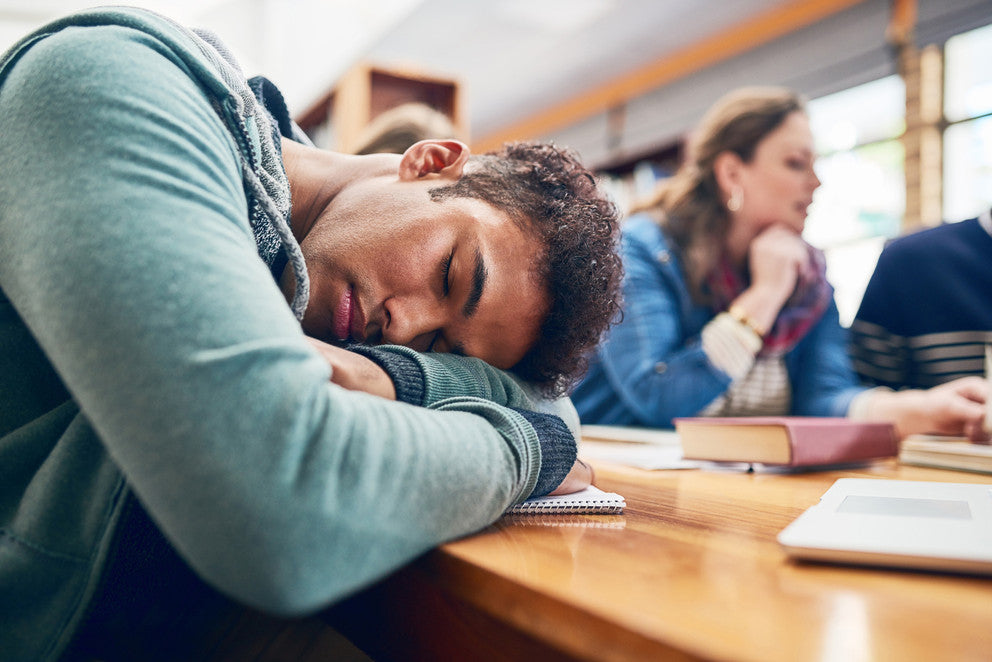News
Breast Cancer and Sleep Apnea
wp:paragraph October is breast cancer awareness month, and there are many initiatives happening to raise awareness for this devastating disease. Breast cancer affects thousands of women in Canada every year, and chances are, you may know someone who has been affected by it. Did you know that sleep disorders, including sleep apnea, can increase your risk of developing breast cancer long-term? /wp:paragraph wp:paragraph The link between breast cancer and sleep apnea /wp:paragraph wp:paragraph Although it’s not really talked about a lot, many studies completed over the years have shown that there is indeed a connection between breast cancer and poor sleep in general, including insomnia and Obstructive Sleep Apnea. While OSA is more common among men, don’t forget that OSA still affects many women each year. And for women over age 30, the chance of developing breast cancer does increase for those with sleep apnea, especially if it is left untreated. /wp:paragraph wp:paragraph While this may sound scary, especially with the young age gap, it may help to know that taking steps to improve your sleep can help to lower your risk of developing breast cancer. /wp:paragraph wp:paragraph How to lower your risk for breast cancer /wp:paragraph wp:paragraph If you have symptoms of sleep apnea, or if you are dealing with chronic insomnia, be sure to speak to your doctor to get the proper treatment. This is extremely important as this will help to lower your risk for a lot of long-term health problems, including cancer. /wp:paragraph wp:paragraph Ladies, don’t skip your regular mammograms and checkups! This can be crucial in screening for breast cancer. Completing regular breast exams at home is important as well, and if something doesn’t feel right, speak to your doctor. Early detection is easier to treat than if it is caught in the later stages. /wp:paragraph wp:paragraph Finally, practicing good sleep habits is very important to getting a good sleep every night, which in turn will be beneficial for staying healthy long term. /wp:paragraph
about Breast Cancer and Sleep ApneaSleep Tips for Thanksgiving
wp:paragraph Canadian Thanksgiving is coming up in just a few short days. Maybe you are planning on gathering with loved ones and eating a big dinner complete with turkey and pumpkin pie. Or perhaps you are keeping the celebrations low key this year, but still plan on indulging in a delicious meal. /wp:paragraph wp:paragraph Whatever your plans are, it is important to note that many people experience disruptions in their sleep around Thanksgiving. This is caused by many things including over-eating, drinking too much, or a disruption in your routine from traveling and/or gathering with other people. Here are a few tips for getting a good night’s sleep during Thanksgiving. /wp:paragraph wp:paragraph Pace yourself at dinner: Over-eating is very common at Thanksgiving, and there are many people who find themselves unable to sleep as a result. After all, the food is just too delicious! But eating too much can cause insomnia and other sleeping problems. Keep your portions on the smaller side and stop eating when you feel full. /wp:paragraph wp:paragraph Keep your nap short: While turkey has been known to make people feel sleepy, it may not necessarily be the only reason you may have an urge to nap after the big meal. Digesting a large meal can take a lot of energy, which may have you feeling the need to nap during the day. If you absolutely need to take a nap, keep it under 30 minutes and try and do so earlier in the day, so that it doesn’t interfere with bedtime. /wp:paragraph wp:paragraph Limit alcohol: Many people tend to drink alcohol a little more than normal at Thanksgiving. There is nothing wrong with indulging in a few beverages but be smart about it. Drinking too much can interfere with your sleep cycle and cause a restless night. Enjoy a beverage or two but drink water throughout the day to help you stay hydrated. /wp:paragraph wp:paragraph Get exercise: A walk after dinner can not only promote family bonding time, but it can also help to promote good digestion to help you sleep better. Exercise also helps your body’s internal clock to wind down once it is bedtime. /wp:paragraph
about Sleep Tips for ThanksgivingHow Seasonal Affective Disorder Disrupts your Sleep
wp:paragraph Seasonal Affective Disorder (otherwise known as SAD) is a form of depression that typically occurs each year around the time when the seasons' transition. A lot of this is because of the shorter hours of sunlight, which can lead to a hormonal imbalance. This is extremely common in the fall months, and lots of people are finding that their sleep habits are being affected by SAD. /wp:paragraph wp:paragraph How SAD can affect your sleep /wp:paragraph wp:paragraph A few of the common symptoms of SAD include mood swings, anxiety, sadness, decreased interest in activities, and social withdrawal. SAD can also affect your sleep in many ways as reduced sunlight can disrupt your biological clock, which in turn can affect your sleep cycle. Many SAD patients find themselves experiencing insomnia or restless nights, or they are sleeping for longer than normal. This can also affect how you function during the daytime and can lead to difficulty concentrating, feeling sluggish or tired, and having low energy. /wp:paragraph wp:paragraph How SAD patients can get a better sleep /wp:paragraph wp:paragraph If your SAD symptoms have reached the point where your mood is down for as much as several days, you have no motivation to do activities you normally enjoy, or your sleep patterns have changed drastically, then you should speak to your doctor for further treatment. They may recommend medication, cognitive behavioral therapy, or light therapy. /wp:paragraph wp:paragraph A few other ways that you can get better sleep without medical intervention include maintaining the practice of good sleeping habits; stick to the same bedtime, keep your bedroom an inviting place to sleep, and limit the use of technology before bedtime. You can also try taking melatonin before bedtime to help reset your sleep cycle. Keeping up with good habits during the daytime, including a healthy diet and exercise, can also be helpful. /wp:paragraph wp:paragraph Finally, get outside! Go for a walk in the daytime before it gets dark. Getting in some sunlight can be extremely beneficial to your internal clock. /wp:paragraph
about How Seasonal Affective Disorder Disrupts your SleepIs Smoking Making your Sleep Worse?
wp:paragraph You probably know that smoking cigarette can have a negative impact on your overall health, but did you know that smoking can be the cause of many sleep problems for adults? /wp:paragraph wp:paragraph The effect of smoking cigarettes on sleep /wp:paragraph wp:paragraph Smoking cigarettes can not only affect your body’s internal clock in a negative way, but it can also raise your risk of developing sleep apnea and can also cause your sleep to be fragmented, meaning your overall sleep is restless, or you experience insomnia. /wp:paragraph wp:paragraph This is because of nicotine, which is the active ingredient found in cigarettes. Nicotine has been known to have a stimulating effect, but not one that is beneficial for sleeping. Cigarette smoking has been known to temporarily reduce anxiety and help people to feel more awake and alert. This is, however, a temporary effect, which is not exactly beneficial for getting a well-rested sleep at night. /wp:paragraph wp:paragraph For this reason, doctors typically advise against smoking if patients are experiencing sleep problems. /wp:paragraph wp:paragraph If you are planning on quitting smoking /wp:paragraph wp:paragraph Quitting smoking is not easy and can take some time. It is best to speak to your doctor if you plan on quitting smoking, as they can help you come up with a plan that works best for you and your overall health. /wp:paragraph wp:paragraph While the process of quitting smoking may be frustrating, it is important to remember that the long-term effects can be extremely beneficial for your sleep. In fact, sleep apnea patients who quit smoking after being diagnosed have reported substantial improvements in their sleep quality from quitting smoking. /wp:paragraph wp:paragraph Don’t expect your sleep to improve right away. Typically, the first few days of quitting can have some unpleasant side effects, and the withdrawal symptoms can continue towards the evening hours when it’s time for bed. Be prepared for the fact that you may experience a few sleepless nights in addition to the cravings and irritability. Make sure you surround yourself with a good support system, practice good sleep hygiene, and be patient. /wp:paragraph
about Is Smoking Making your Sleep Worse?Is your Mattress Hurting your Sleep?
wp:paragraph If you are having trouble sleeping at night, your mattress may be to blame. /wp:paragraph wp:paragraph Since we do spend about a third of our life sleeping, skimping out on the quality and comfort of your mattress is not something you want to do! According to experts, the surface in which you sleep can have a huge impact on the overall quality of your sleep. /wp:paragraph wp:paragraph How to know when it’s time to replace your mattress /wp:paragraph wp:list If your mattress is older than 8-10 years. This is the general life span for most mattresses If you are waking up with any sort of chronic pain of soreness in your body If you are tossing and turning more than normal throughout the night If your mattress is lumpy or beginning to sag /wp:list wp:paragraph Tips for finding the right mattress /wp:paragraph wp:list Find one with the firmness that works for you: most mattresses come in firm, medium and soft. Which one works best for you will depend on your primary sleeping position, comfort level and how it caters to the pressure points on your body. Test the mattress out in person before making the purchase. Don’t just sit on it for a few seconds. Take a few minutes to lie down in the position you normally sleep in and roll around a few times, just to make sure it’s a good fit. If you are not able to try out the mattress before buying it, make sure there is a sufficient return policy, just in case it ends up not working out If you and your partner will be using this mattress, make sure it is a good fit for both of you. Most newer spring mattresses have individual coils, which means if one of you moves, the whole mattress won’t move with it. Give yourself time to adjust! It may not feel absolutely perfect the first night, most mattress companies have a warranty of at least a few months after purchase. /wp:list
about Is your Mattress Hurting your Sleep?Sleep Apnea in Children
Think sleep apnea doesn’t affect children? Think again. While it is not as common, children can occasionally be affected by a sleep disorder called pediatric obstructive sleep apnea. OSA in children may look a little different in children than it does for adults, however, it is important to remember that children require a good night’s sleep to help aid their growing bodies. Because of this, seeking medical help is very important in order to treat sleep apnea symptoms. Causes and Risk Factors Some of the most common risk factors for sleep apnea in children include enlarged tonsils and adenoids, obesity, and underlying health conditions such as Down Syndrome, Cerebral Palsy, and craniofacial abnormalities, just to name a few. Some children may also develop OSA, simply based on family history of the condition. Symptoms to Watch Much like adults, children who have OSA may experience symptoms such as snoring, restless sleep, pauses in breathing, and coughing or choking. Occasionally children may have other symptoms such as night sweats, bed-wetting, or sleep terrors. Untreated OSA in children can also have an effect on how a child functions during the daytime, including learning and/or behavioral problems, hyperactivity, poor weight gain as well as poor performance in school, and difficulty paying attention. Treatment OSA treatment in children will depend on many factors. Your doctor may refer your child to a sleep specialist for further examination of their symptoms. Managing weight in children with obesity issues will often help to treat mild cases of sleep apnea in children. Children with enlarged tonsils and/or adenoids may require surgery in order to treat the sleep apnea. Some cases may even require the use of a CPAP machine to treat the sleep apnea, whether temporary or permanent, though this is not as common for children as it is in adults. Early diagnosis and treatment are key to preventing complications that could affect the child’s growth and development. If your child consistently wakes up feeling tired or is experiencing problems functioning during the daytime, then it’s time to call your doctor. Left untreated, OSA in children can lead to some serious health problems that could cause issues with their growth and development.
about Sleep Apnea in ChildrenGetting your CPAP Ready for the Fall Season
wp:paragraph Now that the weather is slowly starting to transition into the cooler fall temperatures, the nights are now getting cooler. The fall can be a fantastic time to make sure your CPAP machine is in perfect working condition. This is to ensure your sleep apnea is being treated and you have a good night’s sleep without any interruptions. /wp:paragraph wp:paragraph Here are a few ways to get your CPAP machine ready for the fall months; /wp:paragraph wp:paragraph Give your CPAP a deep clean /wp:paragraph wp:paragraph While cleaning your CPAP machine is recommended on a regular basis, doing a deep clean every so often can be extremely beneficial and can extend the life of some of the parts to your CPAP machine. It is best to clean the CPAP parts in the morning and leave them out to air dry so they are clean and dry once it’s time for bed. Do not leave any parts in direct sunlight and do not use bleach to clean your CPAP. /wp:paragraph wp:paragraph Take inventory of your CPAP parts /wp:paragraph wp:paragraph The fall can be an excellent time to take inventory on any parts that may be starting to wear down. Many items such as the mask cushions, tubing, headgear, and/or chin straps (if applicable) do have a life span. If you find these are starting to wear down, then now is the perfect time to be replacing these parts. It is also helpful to check the machine itself; if the cords are starting to wear down or the machine is not working to its full potential, you may need to think about replacing it. Check out www.papsmart.com for any CPAP parts you need. /wp:paragraph wp:paragraph Double-check the CPAP humidifier /wp:paragraph wp:paragraph Now that the nights are cooler, you may find yourself making use of the humidifier more often than before. Be sure to check the humidifier filters at least once a week. If they are dirty or discolored, then it is time to replace them or clean them (if they are not disposable). The humidifier can be a fantastic addition to your CPAP, especially in the cooler months, so it is important to make sure it is in perfect working condition. /wp:paragraph
about Getting your CPAP Ready for the Fall SeasonSleeping Tips for the Traveller
wp:paragraph Now that a few Covid-19 travel restrictions are slowly starting to lift in a few places, a lot of people are starting to plan for that trip that either got postponed, or that has been on their mind for the past year and a half while in quarantine. /wp:paragraph wp:paragraph If you do plan on traveling in the near future, it is important to think about your sleeping arrangements for when you are away, whether you are staying relatively close to home, or you are boarding a plane to fly to a different time zone. Don’t let a poor night’s sleep ruin your vacation. /wp:paragraph wp:paragraph Here are a few tips for getting a good night’s sleep while away from home; /wp:paragraph wp:paragraph Stick to your own sleep schedule /wp:paragraph wp:paragraph If you are staying within the same time zone (or even if it’s different by around an hour or two), try to go to bed and wake up as close to your normal times as you possibly can. Sticking to a familiar bedtime routine will also be helpful. Make sure you also get lots of exercise during the daytime, this way you will be tired at night and it will be easier to fall asleep. /wp:paragraph wp:paragraph Make adjustments to the current time zone /wp:paragraph wp:paragraph Jet lag is no fun to have to deal with when traveling. As difficult as it may be, try to accustom yourself to the current time zone in order to make the most of your trip. If you have to take an overnight flight, try and get some sleep on the plane if you can. If there is still daylight when you arrive, try and stay awake as much as you can in order to properly adjust your body and go to sleep once it’s dark out. /wp:paragraph wp:paragraph Bring any necessary sleep aids /wp:paragraph wp:paragraph If there is something that helps you to sleep better, be sure to bring it! Many travelers use earplugs or a portable white noise machine to sleep, especially in a hotel. Taking melatonin before bed while away can also be helpful in helping your body to maintain its regular sleep/wake schedule. /wp:paragraph
about Sleeping Tips for the TravellerSix Sleep Tips for Post-Secondary Students
wp:paragraph With the long summer days coming to an end, classes for college and university are just starting for the year and whether you are going back to on-campus learning or your classes are still virtual, it’s time to get your sleep routine in check. /wp:paragraph wp:paragraph It’s no secret that post-secondary students are not exactly known for having the best sleeping habits. Sleep is essential for everyone, but if you are a student in college or university, it is more important than ever to make sure you are well-rested during the daytime so you can concentrate on your studies and have a successful semester. /wp:paragraph wp:paragraph Here are a few tips for post-secondary students to get a good night’s sleep; /wp:paragraph wp:list {"ordered":true,"type":"1"} Keep your sleep schedule as consistent as possible: many class schedules in college and university can vary day to day, meaning you may have to deal with classes in the early mornings and/or late evenings. Try your best to go to bed and wake up at within 1-2 hours (even on weekends!) Practice good sleep hygiene: make sure your sleep environment is cool and dark, take advantage of blackout curtains and earplugs if necessary. Following a relaxing routine right before bed will also be important to help you prepare for a good night’s sleep. Don’t use your bed for anything other than sleeping: as tempting as it may be to take your laptop on the bed to finish that essay, don’t do this! Avoid caffeine before bedtime: a cup of coffee may seem tempting if you are doing homework into the evening hours but this will keep you awake at night. Keep alcohol, nicotine, and cannabis to a minimum: all of that late night partying is not great for your sleep cycle. Limit how much you drink in the evening hours and don’t use nicotine or cannabis too close to bedtime. Keep your naps short: if you absolutely need to nap during the daytime, one hour or less is recommended, that way it doesn’t interfere with your bedtime. /wp:list
about Six Sleep Tips for Post-Secondary Students








